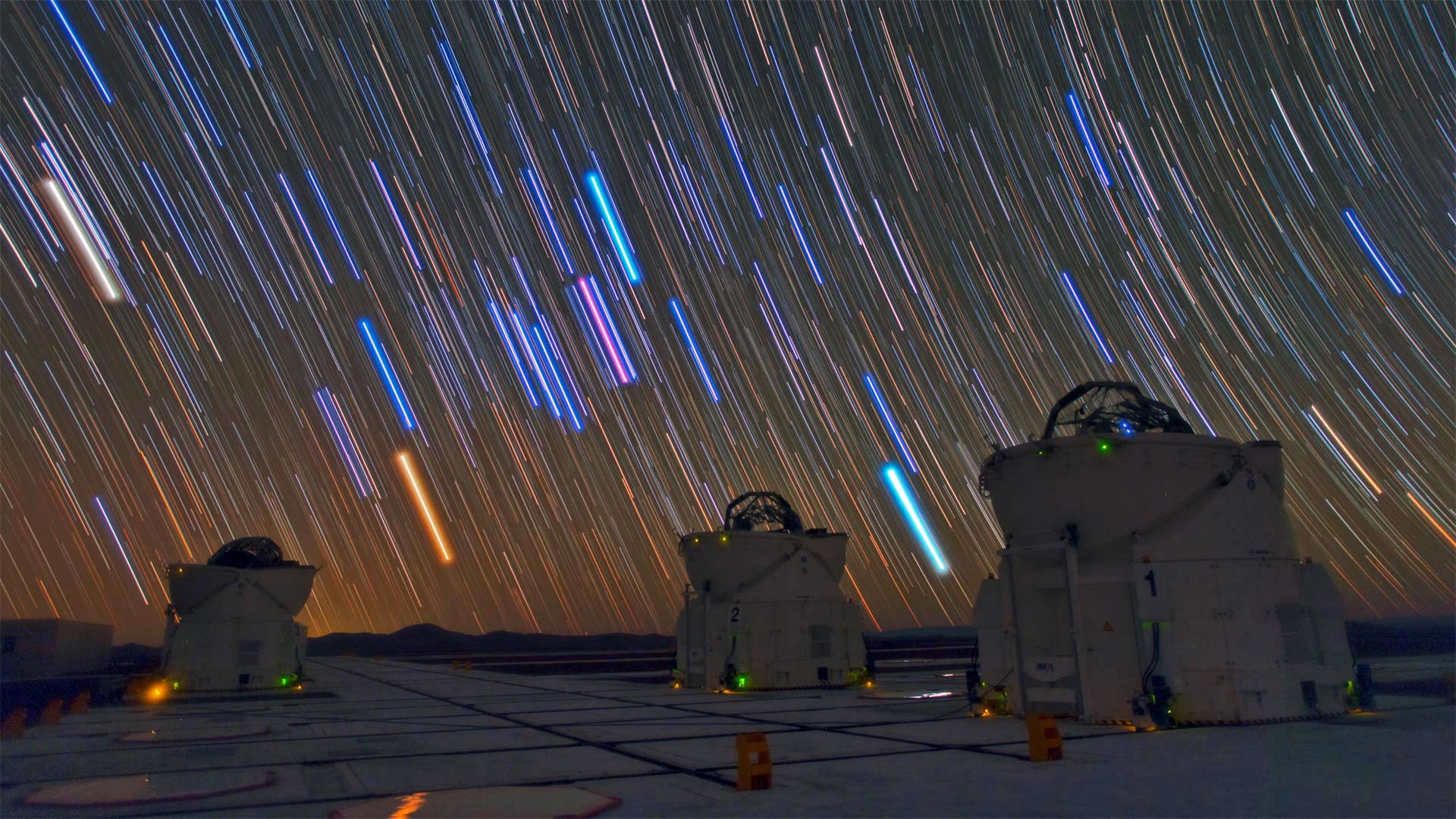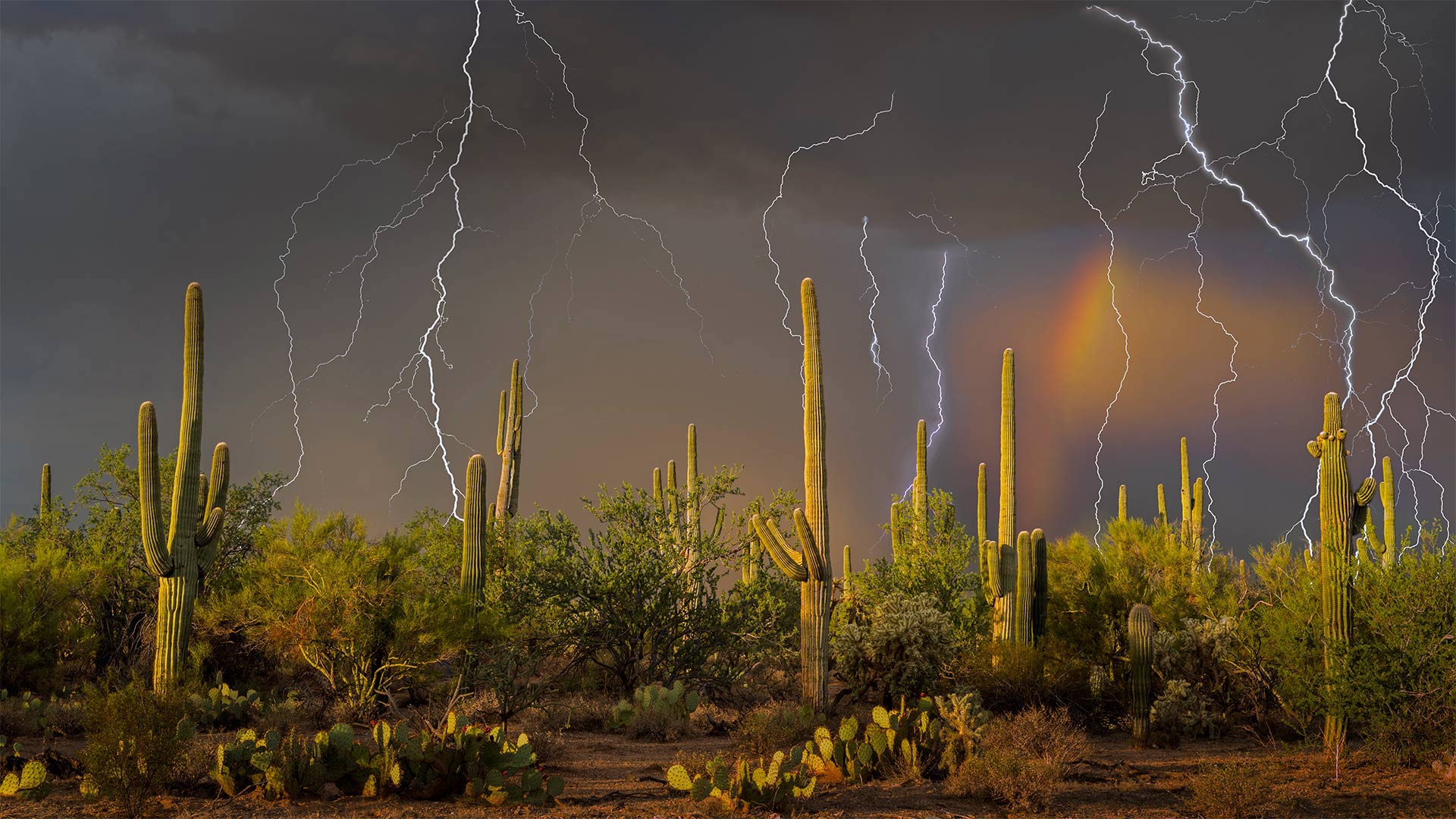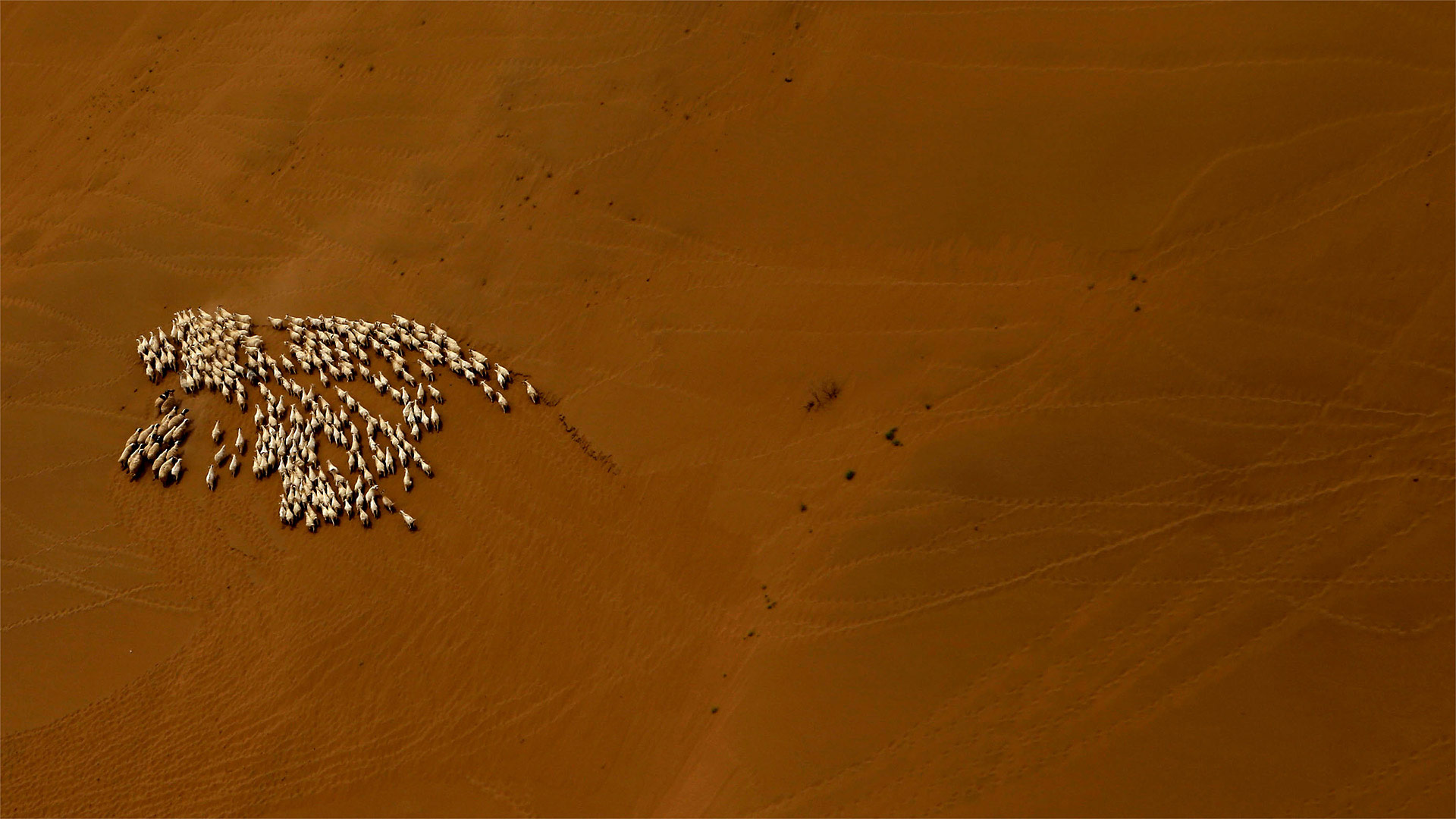标签 沙漠 下的文章
帕瑞纳天文台的望远镜和星迹,智利阿塔卡马沙漠 Telescopes and star trails at Paranal Observatory, Atacama Desert, Chile (© Matteo Omied/Alamy)

帕瑞纳天文台的望远镜和星迹,智利阿塔卡马沙漠 Telescopes and star trails at Paranal Observatory, Atacama Desert, Chile (© Matteo Omied/Alamy)
Happy Astronomy Day!
No, that's not a downpour of lightsabers—but it's no typical night sky either. Stargazing here at Paranal Observatory, on a mountaintop in Chile's desolate Atacama Desert, you'll get one of the clearest possible naked-eye views of the southern skies. This 'lightsaber' effect comes from the photo's long exposure: What we're seeing is these stars' paths as they track across the night sky due to our planet's rotation. The dazzling colors indicate temperature, from chilly red (5,000-ish degrees Fahrenheit) to balmy blue (temps in the tens of thousands).
What about those structures beneath the starry sky? They're three of the eight telescopes making up the Very Large Telescope, an aptly named project of the European Southern Observatory. Together the telescopes compose photographs of astronomically fine focus: If you were to drive a car on the surface of the moon (which we don't advise trying), the VLT could snap a crystal-clear shot of your headlights.
天文学节快乐!
不,那不是一场光剑雨,但也不是典型的夜空。在智利荒凉的阿塔卡马沙漠的山顶上,你可以用肉眼看到最清晰的南方天空。这种“光剑”效应来自于照片的长时间曝光:我们看到的是由于我们星球的自转,这些恒星在夜空中的轨迹。耀眼的颜色表示温度,从冷红色(5000华氏度)到温和的蓝色(数万华氏度)。
星空下的那些建筑呢?它们是组成超大型望远镜的八个望远镜中的三个,这是欧洲南方天文台的一个恰当命名的项目。这些望远镜一起组成了天文上精细聚焦的照片:如果你在月球表面驾驶一辆汽车(我们不建议你尝试),VLT可以拍下你的头灯的清晰照片。
图森北部托托利塔山麓上空的雷暴,亚利桑那州索诺拉沙漠 Lightning storm in the Tortolita Mountain foothills, north of Tucson, Arizona, in the Sonoran Desert (© Jack Dykinga/Minden Pictures)

图森北部托托利塔山麓上空的雷暴,亚利桑那州索诺拉沙漠 Lightning storm in the Tortolita Mountain foothills, north of Tucson, Arizona, in the Sonoran Desert (© Jack Dykinga/Minden Pictures)
The monsoon arrives in the desert
Lightning strikes are common during the summer monsoon of the American Southwest. In Arizona and New Mexico, powerful thunderstorms roll in most every afternoon from early July until mid-September. Here, in the Sonoran Desert north of Tucson, Arizona, the severe weather over the saguaro cactus makes for a dramatic scene.
The monsoon–which refers to the entire season and not just a single storm—is caused by intense daytime heat, which drives shifts in wind patterns that bring moist air to the generally arid Southwest. Mornings typically begin fair, but as temperatures rise throughout the day, precipitation gathers into clouds that finally burst in periods of heavy rain during the late afternoon and evening. The monsoon storms also bring huge dust storms called 'haboobs,' borrowing the name from similar storms in Sudan.
In Arizona, the monsoon can account for nearly half the state's annual rainfall, which averages little more than 7 inches. Water is precious in the desert, and the region relies on this weather pattern to fill reservoirs and maintain the fragile ecosystem. While dry lightning early in the season can spark wildfires, as the monsoon rain starts to fall, it helps reduce local fire danger.
Sheep flock in the Gobi Desert © Patrick Baz/Getty Images

Sheep flock in the Gobi Desert © Patrick Baz/Getty Images
Nomads of the Gobi
The Gobi Desert stretches across 500,000 square miles, covering parts of northern China and Mongolia. Due to the Gobi's high elevation and high latitude, it's a cold desert. And while we tend to think of deserts as endless sand dunes, most of the Gobi's topography is exposed rock.
Despite these harsh conditions, the Gobi is teeming with life—some of it human. Nearly one third of the population in the Gobi Desert leads a pastoral nomadic life. Small communities of people drive their livestock herds—like the sheep seen in our photo today—across the landscape in search of fresh grazing territory. Both herd and herders rarely settle anywhere for long.